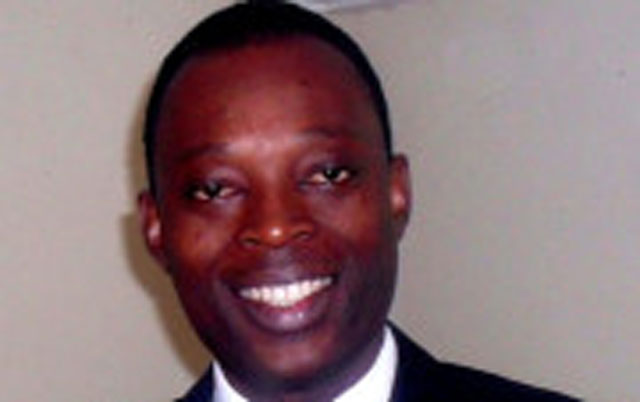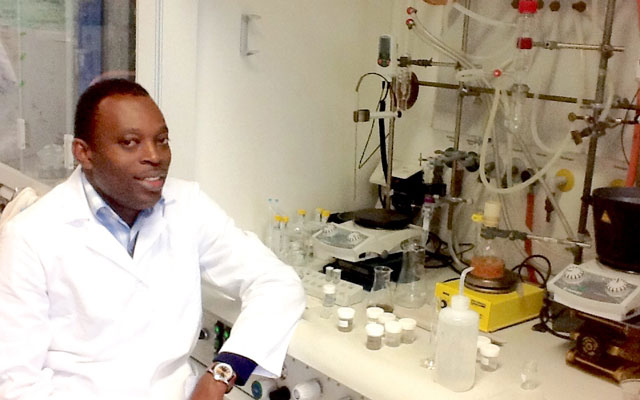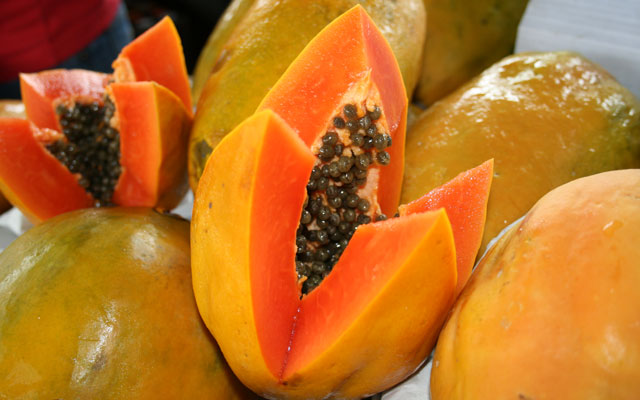Chemical contaminants of industrial and human origin are polluting Nigeria's rivers and fresh water sources, changing dramatically the water's look and taste and, most importantly, posing serious threats to human health.
Emmanuel Unuabonah, a Nigerian chemist from Benin City who specializes in water purification, is testing cheap and innovative solutions, such as a mixture of clay and papaya seeds, to remove heavy metals and noxious substances from water supplies. Unuabonah was awarded a TWAS research grant in 2012 with a pioneering project that already has been honoured for its potential.
Nigeria is a hot spot for biodiversity. But it is also home to oil refineries and industrial activities that have negative impact on the environment, wildlife and the human population.
Organic contaminants like benzene, dyes and toluene in wastewater streams poured into water bodies from leather-making industries and oil-refining processes may induce cancer. Substances such as lead from paint production and gold mining, and arsenic and zinc from agriculture, may cause skin irritations, bronchitis and damage to the nervous system. And there are other chemicals that kill important soil microorganisms. All of these can be found in water.
"My interest in water purification rose during my undergraduate work at the University of Benin, Nigeria," says Unuabonah. "Today I am deeply committed to find useful solutions to potable water issues in my country."
Unuabonah obtained his Master's of Science (2003) and PhD (2007) in industrial chemistry at the University of Ibadan, in Nigeria, where he shaped his scientific interests and began his career. "In the course of my internship after my BSc, I learned how to question things and investigate deeply," he recalls.
Unuabonah was a lecturer at the Federal University of Petroleum Resources, Effurun, and then a lecturer in the Department of Chemical Sciences, Redeemer's University, where he is currently teaching and doing research. In 2009, during TWAS' General Meeting in South Africa, he was inducted for a five-year term as a TWAS Young Affiliate, and later was awarded the TWAS research grant for his project on water purification.
TWAS offers a research grants programme to promising high-level projects in biology, chemistry, mathematics and physics, to purchase equipment, consumable supplies and release scientific publications. The programme awards both individual researchers and groups, and it is currently funded by the Swedish International Development Cooperation Agency (Sida), the Italian government and COMSTECH in Pakistan. The Academy distributed more than 2,200 grants between 1986 and 2013, with grants last year totalling about USD1.7 million.
"This TWAS grant meant a lot to me, being my very first research grant," Unuabonah recalls. "It enabled me to buy a fixed-bed reactor from the UK, which was quite helpful in the course of the project and is still helpful today. The equipment was also a benefit to other researchers around as they used it for their work too."
Unuabonah's investigations are currently aimed at finding inexpensive materials that could replace costly resins, called zeolites, commonly used to remove metal ions and dyes from industrial wastewater. Cheaper adsorbent materials do exist, but they show several drawbacks: ineffective removal of contaminants and low adsorption capacity and rate of removal. In addition, some of them are difficult to remove from solutions after the adsorption process is completed.
As a first step, Unuabonah and his team prepared and successfully tested an alternative material called kaolinite clay, which proved to be effective in the removal of metal ions. His goal was to set up a point-of-use system that uses a small amount of material, before moving to larger scale systems if preliminary tests proved successful. Point-of-use water treatment devices are designed to treat small amounts of drinking water for use in the home.
Due to increasing environmental awareness, there is an urgent need for cost-effective alternative technologies that allow removal of heavy metals from industrial wastewaters. While searching for inexpensive and environmentally friendly materials, Unuabonah decided to explore natural vegetal wastes as potential adsorbents. An innovative technique to remove contaminants from water is biosorption, based on the ability of biological materials of vegetal origin (or biomass) to passively concentrate and bind contaminants onto their cellular structure.
The scientists decided to test defatted papaya (Carica papaya) seeds, both for their high adsorption capacity and also because they are readily available in large quantities, being a common waste in the Nigerian environment. "I was trying to come up with a simple research project my students could do in a little time frame," he explained. "Then I remembered that a few months before I was eating papaya and got fascinated by the seeds by merely looking at them closely."
Papaya seeds look like small, shiny black beads. They have tiny pores on their surface, so the scientists set out to see whether that would help to trap and remove heavy metal ions and organics from water. "While it worked efficiently in adsorbing the contaminants from water, the mix started to ‘bleed’ (degrade) into water after more than 18 hours. This gave the treated water an unpleasant odour," says Unuabonah. "I then thought hard on how to overcome this.”
This is where the idea of mixing papaya seeds and clay came in. "Clay does not degrade in water," he explained, "and I thought a combination of these two would provide a synergistic effect leading to a product that is more efficient than either of them."It turned out that he was right. Unuabonah set up a small device– the size of microwave oven – that includes a pump, a cartridge filled with a mixture of clay and papaya and a collector to collect purified water. Then, the system pumped contaminated water through the filter; this established that the new clay-papaya mix was very efficient in removing positively charged pollutants (cationic pollutants) such as heavy metal ions from lead, cadmium, nickel and dyes, which are quite commonly found in drinking water.
His findings hold great potential, as the decontaminating mix is easy to prepare. It can be regenerated through chemical purification in less than an hour and then be reused several times, making it a sustainable material for water treatment. Besides, his research group is currently working to design a point-of-use equipment for use in homes in rural Nigeria.
Last year, at the Institution of Chemical Engineers Global Awards competition, Unuabonah's project "Clay-papaya combo adsorbent for water treatment" won the Dhirubhai Ambani Award for Outstanding Chemical Engineering Innovation for Resource-Poor People. Further, it was the only highly commended project under the water management and supply award category. Unuabonah has been granted a patent for this invention through the National Office for Technology Acquisition and Promotion (NOTAP) in Nigeria.
Unuabonah's project also meets one of the Millennium Development Goals (No. 7), as it addresses the urgency to provide people with clean and safe drinking water.
The research has been carried out in collaboration with foreign colleagues, including Andreas Taubert and Christina Guenter from the University of Potsdam, Germany, and Jens Weber from the Max Planck Institute for Colloids and Interfaces, also based in Potsdam. Unuabonah also expressed thanks to his early supervisor, Augustine Ofomaja, who helped him develop an interest in water purification while at the University of Benin, and who is now in Vaal University of Technology in South Africa.
The project has now ended, but Unuabonah's research is continuing. In his lab, he coordinates eight master's students, two PhD students and three junior researchers with PhDs. At the moment, five of his researchers are on new projects. Another adsorbent material is under development, which will be used to remove negatively charged, or anionic, contaminants such as nitrate and phosphate from fertilizers, chromate from chrome-plating solutions and paints, and arsenate and arsenite from insecticides.
"This second adsorbent has been found to be especially useful for the deactivation of bacteria like E. coli, Salmonella typhi and Vibrio cholerae in water," adds Unuabonah. The adsorbent is now being processed for a patent by NOTAP in Nigeria. "I'm optimistic about future results,” he says. "The preparation and effective application of the novel adsorbents will help in the design of a simple and cheap system that will be used in Nigeria, to treat water before drinking or using it in cooking. This will certainly help reduce the incidence of waterborne disease, especially in rural areas of my country."
Cristina Serra

